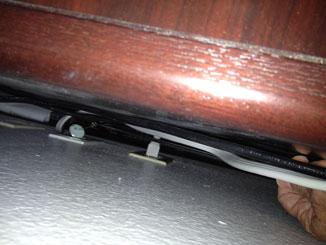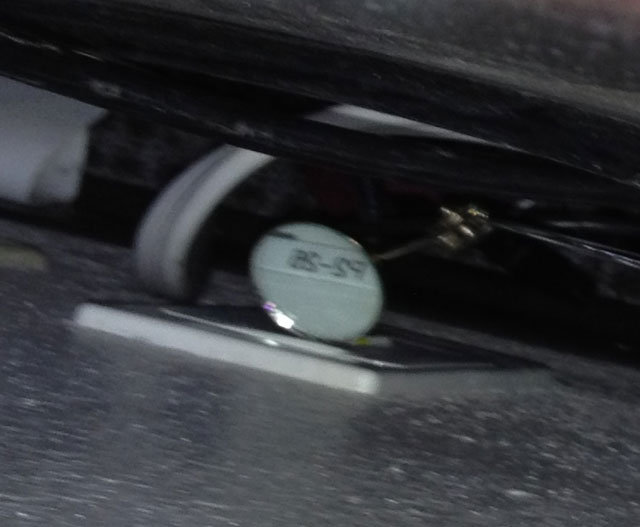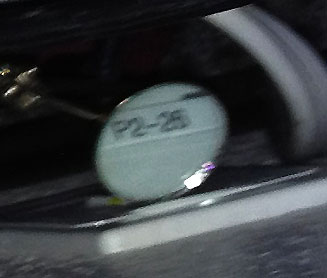I knew when I accepted my new job that I’d be doing a wide variety of things, but I never anticipated I’d be doing CSI-type work.
Earlier this week our Denver IT group was troubleshooting some network issues that were slowing down our work. In order to diagnose the issue, they needed to know which ports some of our computers were connected to.
The problem is that in certain offices, the furniture has been conveniently placed in front of the wall ports, and that furniture weighs approximately the same as the USS Nimitz. In other words, it’s not moving. This presents quite a challenge in discerning the ports’ identities, which are a combination of letters and numbers that correspond to their switch connections in our server room.
My challenge therefore was to figure out a way to identify a specific port which was obscured by a desk that had about 3″ of clearance from the wall. So here’s what I did.
I went home at lunch and found my little extension mirror, the one that looks like a dentist’s mirror on the end of a radio antenna (for those old enough to remember telescoping car radio antennae). When fully extended, I could contort myself enough to get the mirror positioned in front of the wall port and read the labeling. Sort of. The real problem is that my bifocals aren’t synched up with the mirror. Plus there’s that whole “mirror image” thing that hurts my brain trying to interpret what I’m barely seeing. Then there was the complicating factor of the darkness behind the desk. Gee, if there was only some way to light the scene, capture an image, and then manipulate it so that I could confirm that I was reading the wall plate accurately.
I’m nothing if not committed – or at least a candidate for being committed. I held the telescoping mirror in my right hand, arm stretched full length and angled just so. I held a small LED flashlight between my teeth, and my iPhone set to camera mode in my left hand. It took some doing, but I finally got the mirror, flashlight, and camera all angled properly, and snapped a picture just before my entire body cramped.
Here’s what I had on my phone following that contortion:

This is pretty close to the actual size of the photo as viewed on my phone’s screen. You can make out my hand at the lower right, and the mirror is on the left side, near the middle of the picture. Obviously, it wasn’t helpful at this size.
So I emailed the photo to myself, and opened it in Photoshop. The view was a little better after cropping:

You can begin to make out the port label, right? Would you stake your life (or your network) on a correct interpretation at this point? Me neither.
A little more massaging was called for. First, I flipped the whole image horizontally, eliminating the mirror image issue. Then I sharpened the image and tweaked the contrast a bit, giving this still-ot-great-but-definitely-usable picture:

Port P2-26. As far as I know, after all that trouble they still didn’t figure out what was slowing down the network. But at least I can now add “contortionist” to my résumé.
Discover more from The Fire Ant Gazette
Subscribe to get the latest posts sent to your email.

Impressive!
Those little telescoping mirrors are worth their weight in gold!
In an incredible pinch – and if you have enough space to maneuver it – the data side of a CD serves as a barely-functional mirror too. I’ve had to use those to get network jack or PC serial numbers from hard to reach places before.
Rob, the optical disk tip is a great one! A little scotch tape and a yardstick should ensure you can reach almost anyplace. It probably wouldn’t work for some tricky angles, but it’s certainly something to keep in mind.